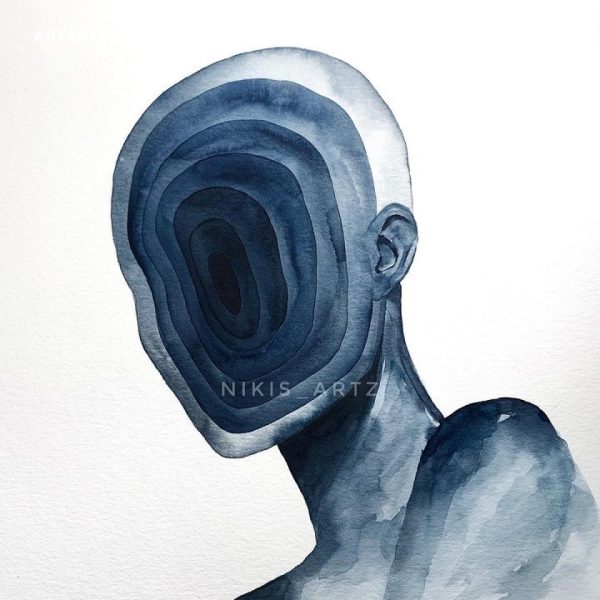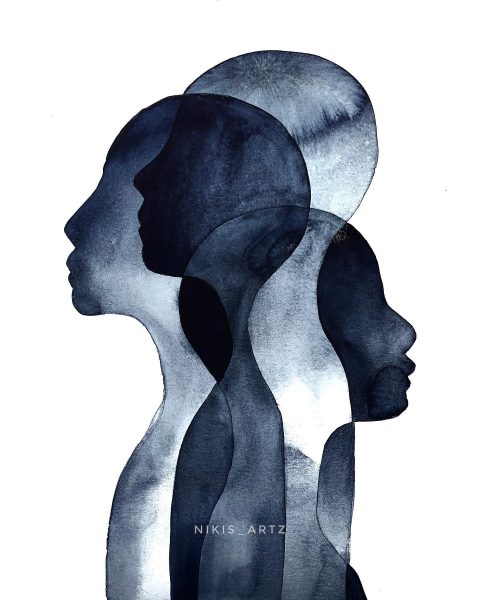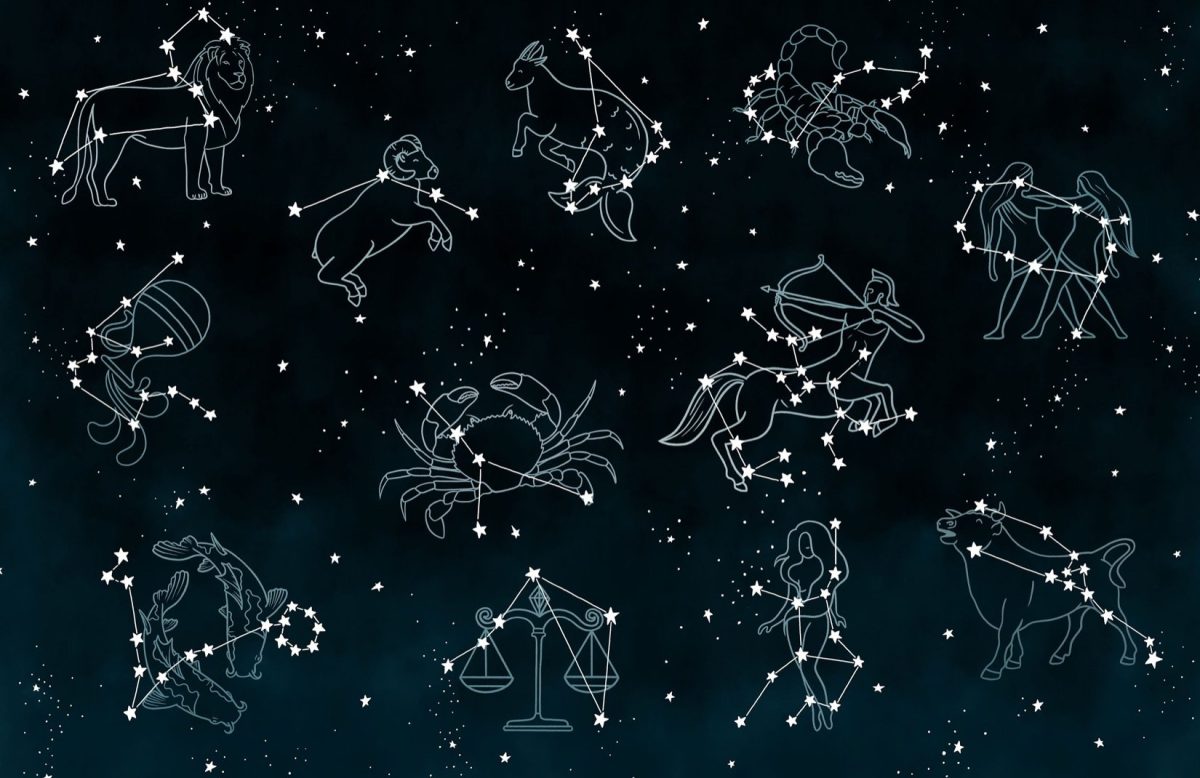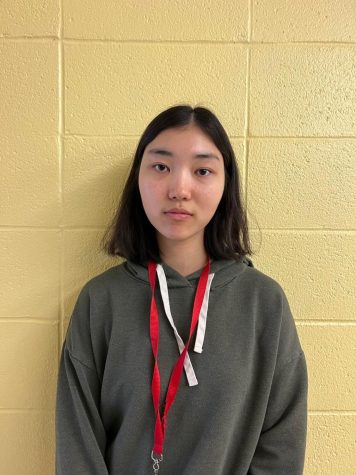A figure of a man is in a twisted position away from the audience. The grotesque posture suggests pain, but one can not be so sure. His face is not visible, as it is turned, with the rest of his body, facing the hands that he has held up to his face. The man’s fingertips and back are drenched with shadows of dark indigo, which drip to the bottom in thin streaks of darkness.
Dominik Gegaj is an 18-year-old watercolor artist in Salzburg, Austria. In his recent artworks, no other colors could be found except for the white on the paper, and, of course, the indigo blue watercolor dabbed on the paper.
“I exclusively use Indigo Blue in my artworks because this color choice doesn’t distract me from my motifs,” Gegaj wrote on his website.
“Blue Insanity 2” was the first of Gegaj’s artworks that I encountered. I was immediately struck by the bluntness of the piece’s title. It did not leave the meaning of the piece up for the interpretation of the viewers, the title spoke for the purpose straight without any ambiguity. The “2” at the end of the title only adds to the sense that the artwork was just one of many drafts of Gegaj’s quest to express human nature rather than a concrete artwork in itself. I guess this is what makes me and his 138,000 followers wait for his new artworks—we all want to be part of the journey that Gegaj is going through.

There are currently three series that Gegaj explores: Resemblance, Prototypes, and Gradients. The Resemblance series acknwledges the uniqueness that humans possess, but also the similarities in the goals they strive to achieve. The Prototypes series expresses the layers within human nature with layers of watercolor, the shade getting darker as it approaches the center of the face. The Gradients series visually portrays the flexibility of the perceptions people have.
I rarely get the impression that an artist is experimenting with his art, especially when he has developed a distinct style. However, while having one of the most unique styles I have ever witnessed, Gegaj continues to excite me with the new themes and expressions he uses to explore human nature.

“It is primarily my self-reflection and thoughts that shape my work,” Gegaj wrote. “In my pieces, I aim to depict the human experience and address important themes such as identity and emotions. It all begins with a sudden idea in my mind. Once I’ve sketched this idea into a concept and am satisfied with it, I translate it onto the canvas using watercolor paints. This process allows me to express my thoughts and feelings in an honest manner.”
Recently, I felt like I had lost agency in creating art. Entering countless art competitions since freshman year, I gradually began to consider what the judges would like to see instead of what I would like to do. Therefore, throughout most of my high school career, my artworks became largely based on the style of the competition. I became disappointed in how conventional my artworks looked, and there was even a period when I became sick of looking at artworks that were made to please other people.
Thus, the honest—and even a little narcissistic—tone in Gegaj’s artworks was like a breath of fresh air. They make it evident that he doesn’t care what the audience thinks. He is not trying to please anyone with what he does; he is simply trying to explore his creativity and reflect his thoughts onto a piece of paper. All of his works seem to shout, “This is what I do, and I know it’s great. You can just watch.”
So, if you want to take a break from the pressures of today’s competitive world and contemplate the human essence, Gegaj’s online gallery would be the perfect site to visit. Whether you like his artworks or not, you’ll soon find yourself released from the conventional clutches of society and absorbed into the fascinating insights of the human mind presented by a unique mind.
Online Gallery: https://www.gegajdominik.com/gallery
Instagram: @nikis_artz











































































































































